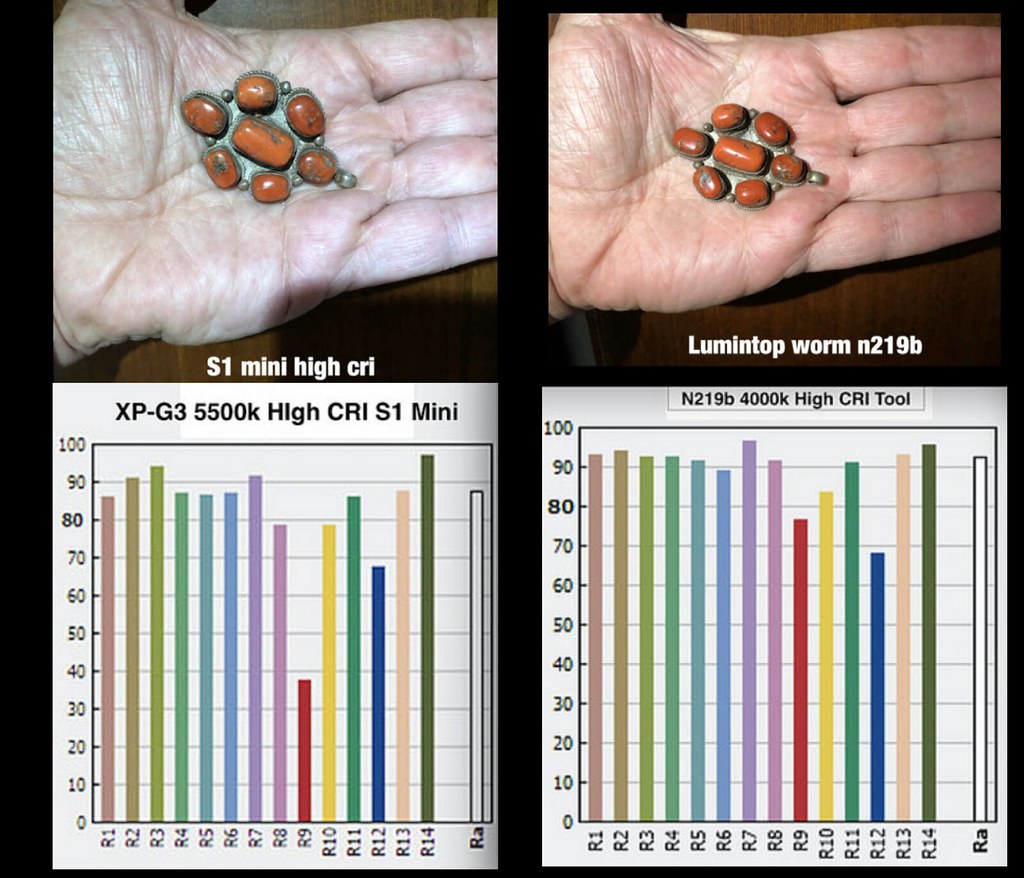“a cool-tint flashlight the red shirt will appear black and every white residence in the neighborhood will seem to match the described blue house. With a neutral-tint beam”
Elzetta is misusing the term cool, which is a color temperature.
they refer to a cool “tint” which is a misuse of the word tint
they describe color rendering inaccurately, red does not look black under cool white, and it is not the cool white that makes a Low CRI light poor at representing red. Elzetta fails to use the term CRI at all
then they misuse the term neutral-tint to describe high color rendering, again confusing the term tint, for CRI, and they confuse the term neutral color temperature for a type of tint, which it is not. Neutral is not a type of CRI, neutral can be used to describe either a CCT or a Tint, but both CCT and Tint are separate from each other.
I disagree, it seems to me you are suggesting that warmer color temperature shows colors better, the way Elzetta does, but CCT is not an indication of CRI. High CRI shows colors better. Some High CRI LEDs have a warmer color temperature, but it is the High CRI that shows colors better, not the neutral color temperature, and not the possibly neutral tint.
again:
neutral color temperature is not the same as neutral tint, and is not the same as high CRI
clearly people at Elzetta and on this board, share many errors in terminology.
bottom line is high CRI is required to show colors more accurately.
tint is a separate variable, and I agree that some high CRI leds, such as the crees that Zebra uses, have green tint. Which is why I am not impressed with Zebras high CRI
many Zebra buyers end up going to a lower CRI “W” color temperature (which is actually what I call neutral white), to get away from the green tint of the high CRI. In the process they give up High Color Rendering. Zebralight High CRI LEDs have rather low R9, which imo is one of the reasons they have green tint.
so no, Neutral White does not render colors better, Neutral Tint does not render colors better. High CRI renders colors better. And a High CRI LED can also have neutral tint, and can also have a neutral white color temperature
there is so much confusion about terminology, it is almost too much to explain. And I suspect many here simply have not yet understood the differences in meanings of the term neutral, since it is used separately for a type of color temperature and a type of tint.
It is also a common misuse of the term tint, to say someone likes neutral tint, when they mean neutral color temperature, aka, neutral white. Then they misuse the term pure white, as if only one color temperature is white.
its a very messy mess of terminology. I can see why some people dont yet grasp all the nuances of the various terms, neutral, white, tint, CRI, cct, and Kelvin
here is a neutral white, neutral tint, low CRI, low R9 led:

here is a neutral white, not neutral tint, high CRI, low R9 led

here is a comparison of a cool white, high CRI, not neutral tint, lower R9 led on the left, and a neutral white, high CRI, neutral tint, higher R9 LED on the right







